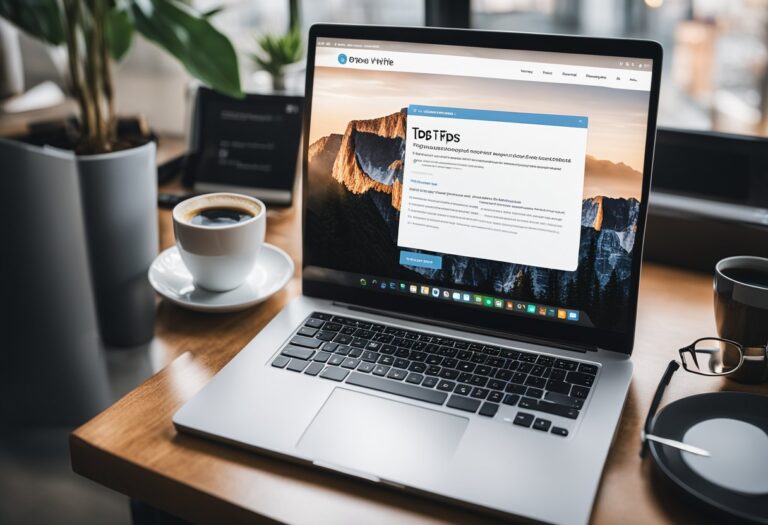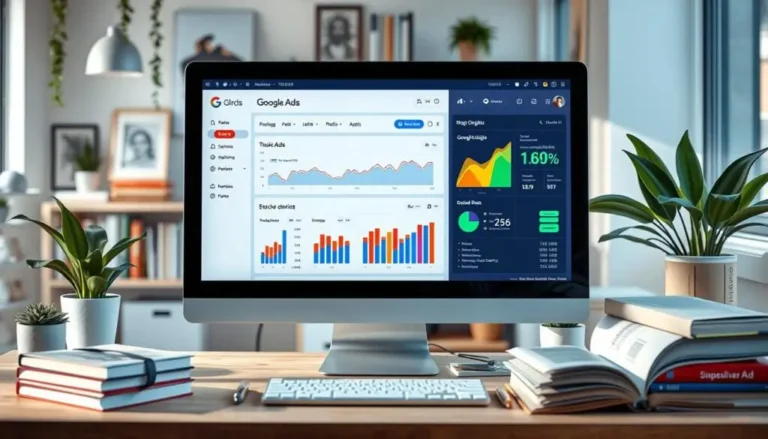5 Essential Metrics to Track for Blog Performance Analysis
Are you pouring your heart and soul into your blog, only to wonder if anyone’s reading it? 🤔 You’re not alone. In the vast ocean of online content, it’s easy to feel like your blog is just a drop in the bucket. But what if you could see the ripples it’s making?
Enter the world of Blog performance metrics. These powerful tools can transform your blogging strategy from guesswork to goldmine. By tracking the right metrics, you’ll gain invaluable insights into your audience, your content’s impact, and your blog’s overall success. But with so many numbers to crunch, where do you start?
In this post, we’ll dive into the 5 Essential metrics every blogger should track. From website traffic to ROI, we’ll explore how these key indicators can help you understand your audience, boost your visibility, and turn your blog into a thriving platform. Ready to take your blogging game to the next level? Let’s get measuring!
Table of Contents
Website Traffic: Understanding Your Audience
Now that we’ve introduced the importance of tracking blog performance, let’s dive into the first essential metric: Website traffic. Understanding your audience through Traffic analysis is crucial for blog performance analysis and overall success.
A. Unique Visitors: Gauging Reach
Unique visitors represent the number of individual users who have visited your blog within a specific time frame. This metric is vital for assessing the reach and growth of your blog’s audience.
Why Unique Visitors Matter
- Audience Size: Provides a clear picture of how many people your content is reaching.
- Growth Tracking: Helps monitor the expansion of your readership over time.
- Marketing Effectiveness: Indicates the success of your promotional efforts in attracting new readers.
To effectively track unique visitors:
- Use Google Analytics or similar tools to monitor daily, weekly, and monthly unique visitor counts.
- Set realistic goals for audience growth based on your niche and content strategy.
- Analyze trends to identify factors influencing visitor numbers, such as content topics or marketing campaigns.
| Time Frame | Unique Visitors | Growth Rate |
|---|---|---|
| Month 1 | 5,000 | Baseline |
| Month 2 | 6,250 | 25% |
| Month 3 | 7,500 | 20% |
B. Pageviews: Measuring Content Popularity
Pageviews represent the total number of pages viewed on your blog, including repeated views of the same page. This metric helps you understand which content resonates most with your audience.
Leveraging Pageview Data
- Content Performance: Identify your most popular posts and topics.
- User Behavior: Gain insights into how visitors navigate your blog.
- Content Strategy: Inform future content creation based on what performs well.
To maximize the value of pageview data:
- Track page views for individual posts as well as overall blog performance.
- Analyze which types of content (e.g., how-to guides, listicles, case studies) generate the most views.
- Use pageview data to optimize your content calendar and focus on high-performing topics.
C. Time on Page: Assessing Engagement
Time on page measures how long visitors spend on a particular page or post. This metric is crucial for understanding reader engagement and content quality.
Interpreting Time on Page
- Content Quality: Longer time on the page often indicates more engaging or valuable content.
- Reader Behavior: Helps identify which topics or formats keep readers’ attention.
- SEO Impact: Search engines may consider time on the page as a ranking factor.
To improve time on page:
- Create in-depth, high-quality content that provides value to your readers.
- Use engaging formats such as videos, infographics, or interactive elements to increase reader interaction.
- Ensure your content is well-structured and easy to read, with clear headings and subheadings.
| Content Type | Avg. Time on Page | Engagement Level |
|---|---|---|
| How-to Guides | 4:30 minutes | High |
| News Articles | 2:15 minutes | Medium |
| Product Reviews | 3:45 minutes | High |
D. Bounce Rate: Identifying Content Effectiveness
Bounce rate is the percentage of visitors who leave your blog after viewing only one page. A high bounce rate may indicate that your content isn’t meeting visitor expectations or that your site navigation needs improvement.
Addressing Bounce Rate Concerns
- Content Relevance: Ensure your content matches what visitors expect based on how they found your blog.
- User Experience: Improve site design and navigation to encourage further exploration.
- Call-to-Action: Implement clear CTAs to guide visitors to related content or desired actions.
To reduce bounce rate:
- Analyze which pages have the highest bounce rates and identify potential issues.
- Improve page load times to prevent visitors from leaving due to slow loading.
- Use internal linking to guide readers to related content and keep them engaged.
Bounce Rate Benchmarks
| Blog Type | Average Bounce Rate |
|---|---|
| E-commerce Blogs | 40-60% |
| B2B Blogs | 50-70% |
| Content/Media | 65-90% |
Understanding these four key aspects of website traffic – unique visitors, page views, time on page, and Bounce rate – provides a comprehensive view of your blog’s performance and audience engagement. By regularly analyzing these metrics, you can make data-driven decisions to improve your content strategy and grow your blog’s audience.
To effectively track and analyze these metrics:
- Set up Google Analytics or a similar analytics tool if you haven’t already.
- Create a dashboard that displays these key metrics for easy monitoring.
- Establish benchmarks based on your blog’s historical performance and industry standards.
- Regularly review and analyze trends to identify areas for improvement.
- Use A/B testing to experiment with different content formats, topics, or layouts and measure their impact on these metrics.
Conversion Rate: Turning Readers into Customers

Now that we’ve explored Website traffic and its importance in understanding your audience, let’s dive into a crucial metric that directly impacts your blog’s bottom line: conversion rate. This metric measures how effectively you’re turning your readers into customers, subscribers, or leads. By focusing on conversion rate optimization, you can maximize the value of your blog traffic and achieve your business goals more efficiently.
A. Newsletter Sign-ups: Building a Loyal Audience
One of the most common and valuable conversions for bloggers is newsletter sign-ups. Building an email list allows you to nurture relationships with your readers and keep them engaged with your content over time. Here’s why newsletter sign-ups are crucial and how to track them effectively:
- Importance of Email Lists:
- Direct communication channel
- Higher engagement rates compared to social media
- Opportunity for personalized content delivery
- Increased likelihood of future conversions
- Tracking Newsletter Sign-ups:
- Use email marketing platforms (e.g., Mailchimp, ConvertKit)
- Implement Google Analytics goals
- Track sign-up form submissions
- Optimizing Sign-up Rates:
- A/B test sign-up form placement
- Offer lead magnets (e.g., free ebooks, exclusive content)
- Use exit-intent pop-ups
- Highlight social proof and benefits of subscribing
To effectively measure and improve your newsletter sign-up conversion rate, consider the following metrics:
| Metric | Formula | Ideal Range |
|---|---|---|
| Sign-up Conversion Rate | (Number of Sign-ups / Total Visitors) x 100 | 2-5% |
| Form Abandonment Rate | (Number of Incomplete Forms / Total Form Views) x 100 | <40% |
| Average Time to Convert | Total Time to Sign-up / Number of Sign-ups | Varies |
By closely monitoring these metrics, you can identify areas for improvement and implement strategies to boost your newsletter sign-up rates.
B. Product Purchases: Measuring Direct Impact
For bloggers who sell products or services directly through their website, tracking product purchases is essential for measuring the direct impact of their content on revenue. Here’s how to effectively track and optimize product purchases:
- Setting Up E-commerce Tracking:
- Implement e-commerce tracking in Google Analytics
- Use conversion tracking pixels for Advertising platforms
- Set up goal funnels to identify drop-off points
- Key Metrics for Product Purchases:
- Conversion rate
- Average order value
- Revenue per visitor
- Cart abandonment rate
- Strategies to Improve Product Purchase Conversions:
- Create targeted content that addresses customer pain points
- Use compelling calls-to-action (CTAs) throughout your blog posts
- Implement retargeting campaigns for interested visitors
- Offer limited-time discounts or bundle deals
Social Media Engagement: Expanding Your Reach

Now that we’ve discussed conversion rates, let’s explore how Social media engagement can significantly impact your blog’s performance and expand its reach. Social media platforms have become integral to content distribution and audience interaction. By tracking key social media metrics, you can gain valuable insights into your content’s performance and make data-driven decisions to improve your blog’s overall impact.
A. Shares: Measuring Content Virality
Shares are perhaps the most powerful indicator of your content’s virality and its ability to reach new audiences. When readers share your blog posts on their Social media profiles, they’re essentially endorsing your content to their network, exponentially increasing your potential reach.
Why Shares Matter
- Expanded Reach: Each share exposes your content to a new audience, potentially bringing in new readers and subscribers.
- Social Proof: High share counts serve as social proof, indicating that your content is valuable and worth reading.
- SEO Benefits: While not a direct ranking factor, shares can indirectly improve your search engine visibility by increasing traffic and backlinks.
How to Track Shares
- Use social media analytics tools like Buzzsumo or SharedCount to track shares across different platforms.
- Implement social share buttons on your blog with built-in counters to display share counts.
- Monitor platform-specific analytics (e.g., Facebook Insights, Twitter Analytics) for detailed share data.
Strategies to Increase Shares
- Create shareable content formats (e.g., infographics, quote images)
- Include clear and prominent social sharing buttons
- Ask readers to share if they found the content valuable
- Optimize your content for different platforms (e.g., Twitter-friendly headlines)
B. Comments: Gauging Reader Interaction
Comments are a direct measure of how engaging and thought-provoking your content is. They indicate that readers are not just passively consuming your content but are actively participating in a dialogue.
The Value of Comments
- Reader Engagement: Comments show that your content resonates with readers enough to prompt a response.
- Community Building: A lively comment section can foster a sense of community around your blog.
- Content Ideas: Reader comments often provide insights into what your audience wants to learn more about, serving as inspiration for future posts.
Tracking Comment Metrics
- Monitor the number of comments per post
- Analyze the quality and depth of comments
- Track comment trends over time
Encouraging More Comments
- End posts with thought-provoking questions
- Respond promptly to comments to encourage further discussion
- Implement a user-friendly comment system
- Consider comment incentives (e.g., featuring top commenters)
C. Likes: Understanding Content Appreciation
While likes may seem like a vanity metric, they provide valuable insight into what type of content resonates with your audience. Likes are a quick and easy way for readers to show appreciation without the commitment of sharing or commenting.
The Significance of Likes
- Content Feedback: Likes help you understand which topics and content formats your audience prefers.
- Algorithmic Boost: Many social media platforms use likes as a factor in determining content visibility.
- Reader Sentiment: Likes offer a general sense of how well your content is being received.
Tracking Likes Effectively
- Use platform-specific analytics to track likes on each social media channel
- Compare like-to-view ratios to gauge content performance
- Analyze which types of posts consistently receive more likes
Strategies to Increase Likes
- Create visually appealing content (e.g., high-quality images, well-designed graphics)
- Use emotion-evoking headlines and content
- Post at optimal times when your audience is most active
- Experiment with different content formats (e.g., videos, polls, stories)
D. Click-throughs: Evaluating Social Media Traffic
Click-throughs measure how effectively your social media posts are driving traffic to your blog. This metric is crucial for understanding the return on investment of your social media efforts.
Why Click-throughs Matter
- Traffic Generation: Click-throughs directly contribute to your blog’s overall traffic.
- Content Relevance: High click-through rates indicate that your social media content is compelling and relevant to your audience.
- Conversion Potential: More click-throughs mean more opportunities for conversions on your blog.
Tracking Click-through Rates (CTR)
To calculate CTR, use this formula:
| Metric | Formula |
|---|---|
| Click-through Rate (CTR) | (Number of Clicks / Number of Impressions) x 100 |
- Use UTM parameters to track Traffic sources in Google Analytics
- Analyze platform-specific analytics for click data
- Compare CTRs across different types of posts and platforms
Improving Click-through Rates
- Craft compelling headlines and social media copy
- Use eye-catching visuals to accompany your posts
- Experiment with different call-to-action (CTA) phrases
- Time your posts for maximum visibility
Integrating Social Media Metrics for Comprehensive Analysis
While each of these metrics provides valuable insights on its own, the true power lies in analyzing them together. Here’s how you can integrate these metrics for a more comprehensive understanding of your blog’s Social media performance:
- Content Performance Matrix:
| Metric | High | Low |
|---|---|---|
| Shares | Viral potential | Needs improvement in shareability |
| Comments | Highly engaging | May lack depth or controversy |
| Likes | Broadly appealing | Could be more relatable |
| Click-throughs | Effective CTAs | Needs better hooks or relevance |
- Engagement Ratio: Calculate an overall engagement ratio by combining shares, comments, and likes relative to your follower count. This gives you a holistic view of how well your content is performing across different engagement types.
- Correlation Analysis: Look for correlations between different metrics. For example, do posts with high share counts also have high click-through rates? Understanding these relationships can help you optimize your content strategy.
- Platform Comparison: Compare how your content performs across different social media platforms. This can help you tailor your content strategy for each platform and allocate resources more effectively.
- Trend Analysis: Track these metrics over time to identify trends and patterns. This can help you understand seasonal variations, content preferences, and the overall growth of your social media presence.
Search Engine Rankings: Improving Visibility

Improving your search engine rankings is essential for enhancing your blog’s visibility and Driving organic traffic. A higher ranking on search engines like Google means that more potential readers will discover your content, leading to greater engagement and conversions. This section explores effective strategies for optimizing your search engine visibility, supported by statistics and external resources.
Why Search Engine Rankings Matter
Search engine rankings are crucial for several reasons:
- Increased Visibility: Higher rankings mean your blog is more likely to appear on the first page of search results, where the majority of clicks occur. According to HubSpot, 75% of users never scroll past the first page of search results, making it vital to aim for a top position.
- Enhanced Credibility: Appearing at the top of search results enhances your blog’s credibility. Users tend to trust results that appear on the first page more than those buried further down.
- Higher Click-Through Rates (CTR): A higher position in search results leads to increased CTR. Research indicates that the first result in Google gets approximately 28.5% of the clicks, while the second and third results receive about 15% and 11%, respectively.
- Long-Term Traffic: Effective SEO strategies can create a sustainable source of organic traffic over time. Unlike paid advertising, which stops generating traffic when your budget runs out, good SEO practices can continue to bring visitors to your blog for months or even years.
Key Strategies for Improving Search Engine Rankings
Here’s a table summarizing effective strategies to improve your blog’s search engine rankings:
| Strategy | Description | Expected Outcome |
| Keyword Optimization | Research and use relevant keywords throughout your content, including in titles, headers, and meta descriptions. This helps search engines understand your content’s topic. | Higher search rankings for targeted keywords. |
| Quality Content Creation | Create valuable, informative, and engaging content that meets the needs of your audience. Content that answers questions, solves problems, or provides entertainment tends to rank better. | Increased dwell time and lower bounce rates, leading to improved rankings. |
| Mobile Optimization | Ensure your blog is mobile-friendly, as search engines prioritize mobile-optimized sites. Use responsive design and test usability across various devices. | Improved rankings and a better user experience across devices. |
| Page Load Speed | Optimize your website’s speed by compressing images, minimizing JavaScript and CSS, and leveraging browser caching. Faster-loading pages improve user satisfaction and decrease bounce rates. | Lower bounce rates and higher rankings due to better user engagement. |
| Backlink Building | Acquire quality backlinks from reputable websites to improve your site’s authority. Engaging in guest blogging, collaborating with influencers, and creating shareable content can help attract backlinks. | Enhanced domain authority and higher rankings, as backlinks are a critical ranking factor. |
| On-Page SEO | Optimize each page of your blog by including relevant keywords in titles, headers, and throughout the text. Use alt text for images and ensure your content is well-structured with appropriate headings. | Improved chances of ranking for specific queries and better user experience. |
| Technical SEO | Focus on the technical aspects of your website, including XML sitemaps, robots.txt files, and schema markup. This helps search engines crawl and index your content more effectively. | Increased visibility in search engines and better understanding of your content by crawlers. |
Statistics to Consider
- User Behavior: According to HubSpot, 75% of users never scroll past the first page of search results, highlighting the importance of ranking in the top positions.
- Content-Length: A study by Backlinko found that the average Google first-page result contains 1,447 words. Longer, in-depth content tends to rank better because it often provides more comprehensive answers to users’ queries.
- Mobile Usage: As of 2024, Statista reports that 60% of all online searches are conducted on mobile devices, making mobile optimization vital for search visibility.
- CTR and Rankings: Research shows that the first result in Google receives about 28.5% of clicks, while the second and third results receive around 15% and 11%, respectively. This demonstrates the significant impact of higher rankings on click-through rates.
Content is king, but engagement is queen, and the lady rules the house! – Mari Smith, Social Media Expert
Additional Resources
For further reading on improving your blog’s search engine rankings, consider exploring these external resources:
- Moz’s Beginner’s Guide to SEO: A comprehensive guide that covers the basics of SEO and how to improve your search visibility.
- Ahrefs Blog on SEO Basics: A practical resource with actionable tips for optimizing your blog for search engines.
- Google Search Central: SEO Starter Guide: An official guide from Google that provides best practices for SEO.
- Neil Patel’s SEO Unlocked: A free online course that dives deep into SEO strategies and techniques.
Return on Investment (ROI): Justifying Your Blogging Efforts

In the world of blogging, demonstrating the return on investment (ROI) is essential for justifying the time, effort, and resources you dedicate to your content creation. Understanding how your blogging efforts translate into tangible results not only helps you gauge success but also enables you to make data-driven decisions for future strategies. Here, we’ll explore the various ways to measure ROI, the metrics to consider, and strategies to enhance your blog’s profitability.
Understanding ROI in Blogging
Return on Investment (ROI) is a performance measurement used to evaluate the efficiency of an investment. In the context of blogging, ROI can be defined as the benefits gained from your blogging efforts compared to the costs incurred. These benefits can come in various forms, including increased website traffic, higher engagement rates, lead generation, and ultimately, conversions or sales.
Key Metrics for Measuring ROI
To effectively measure the ROI of your blog, consider tracking the following key metrics:
| Metric | Description | Importance |
| Traffic | The number of visitors to your blog, can indicate the reach of your content. | Higher traffic often correlates with increased engagement and potential conversions. |
| Conversion Rate | The percentage of visitors who take a desired action, such as signing up for a newsletter or making a purchase. | A higher conversion rate signifies effective content that resonates with your audience. |
| Lead Generation | The number of leads generated from your blog, often tracked through sign-ups or inquiries. | Essential for businesses looking to convert readers into customers. |
| Engagement Metrics | The number of leads generated from your blog, is often tracked through sign-ups or inquiries. | High engagement often leads to greater brand loyalty and repeat visits. |
| Revenue | Direct sales generated from blog-related activities, such as affiliate marketing, product sales, or services offered. | The ultimate measure of ROI, showing how much profit your blog is generating. |
Calculating ROI
To calculate the ROI of your blogging efforts, use the following formula:
ROI=(Net Profit−Cost of Investment)Cost of Investment×100\text{ROI} = \frac{(\text{Net Profit} – \text{Cost of Investment})}{\text{Cost of Investment}} \times 100ROI=Cost of Investment(Net Profit−Cost of Investment)×100
Example: If you spend $500 on your blog (hosting, content creation, marketing) and generate $1,500 in revenue, your calculation would look like this:
- Net Profit: $1,500 (revenue) – $500 (cost) = $1,000
- ROI: 1,000500×100=200%\frac{1,000}{500} \times 100 = 200\%5001,000×100=200%
This means you have a 200% return on your blogging investment, indicating a strong performance.
Statistics on Blogging ROI
- Content Marketing ROI: According to a study by HubSpot, 66% of marketers say that their blog is their top priority for content marketing. This highlights the value businesses place on blogging as an effective marketing tool. Source
- Cost-Effective Marketing: Businesses that prioritize blogging are 13 times more likely to achieve a positive ROI compared to those that do not invest in blogging.
- Increased Leads: Companies that blog generate 67% more leads per month than those that do not. This underscores the lead generation potential of effective blogging. Source
Strategies to Enhance Blogging ROI
To maximize the return on your blogging efforts, consider implementing the following strategies:
- Target Audience Research: Understand your audience’s needs, preferences, and pain points to create content that resonates with them. This can increase engagement and conversion rates.
- Optimize for SEO: Implement SEO best practices to improve your blog’s visibility in search engines, driving more organic traffic. The more visitors you attract, the higher your potential for conversions.
- Promote Your Content: Use social media, email marketing, and other promotional tactics to drive traffic to your blog. This can significantly enhance your reach and potential for generating leads.
- Analyze and Adjust: Regularly review your analytics to see which types of content perform best. Use this data to refine your content strategy and focus on what drives the most engagement and conversions.
- Diversify Revenue Streams: Explore various monetization options, such as affiliate marketing, sponsored posts, and digital products, to enhance your blog’s profitability.
Additional Resources
For more insights on measuring blogging ROI, check out these external resources:
- HubSpot’s Ultimate Guide to Blogging
- Neil Patel’s Guide to Content Marketing ROI
- Content Marketing Institute: Measuring ROI
Conclusion
Tracking the right metrics is essential for understanding your blog’s performance and making informed decisions to enhance its impact. By focusing on the five essential metrics—traffic, engagement, conversion rates, SEO rankings, and social media interactions—you can gain valuable insights into your audience’s behavior and preferences.
Regularly analyzing these metrics not only helps you identify areas for improvement but also empowers you to celebrate your successes. Whether you’re aiming to increase your readership, boost engagement, or drive conversions, leveraging these insights will allow you to refine your content strategy and achieve your blogging goals.
In today’s competitive digital landscape, staying data-driven is crucial. By continuously monitoring and adjusting your approach based on these key metrics, you can elevate your blog, foster a loyal audience, and ultimately, maximize your return on investment.
Remember, successful blogging is not just about producing content; it’s about understanding what resonates with your readers and adapting accordingly. So, keep these essential metrics at the forefront of your strategy, and watch your blog flourish!






